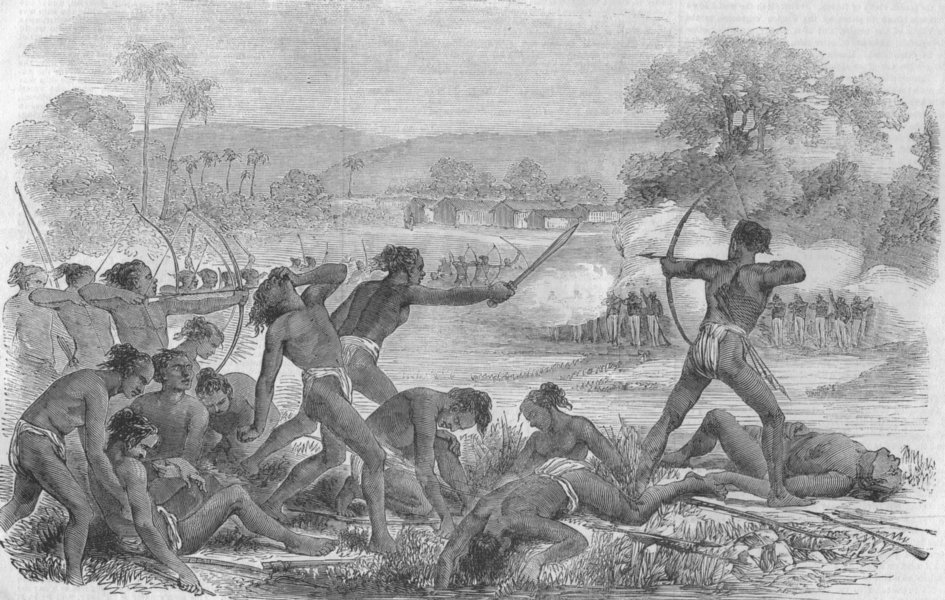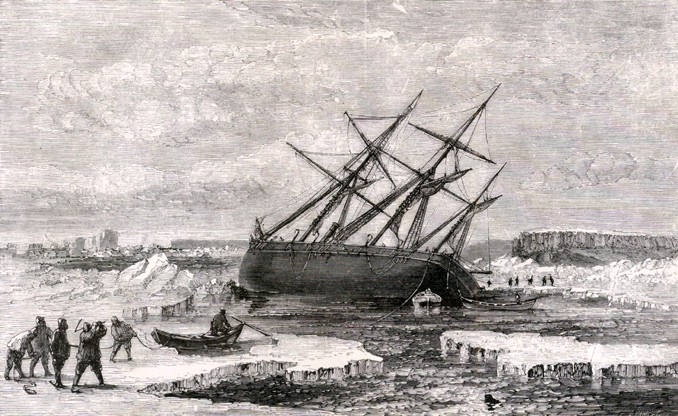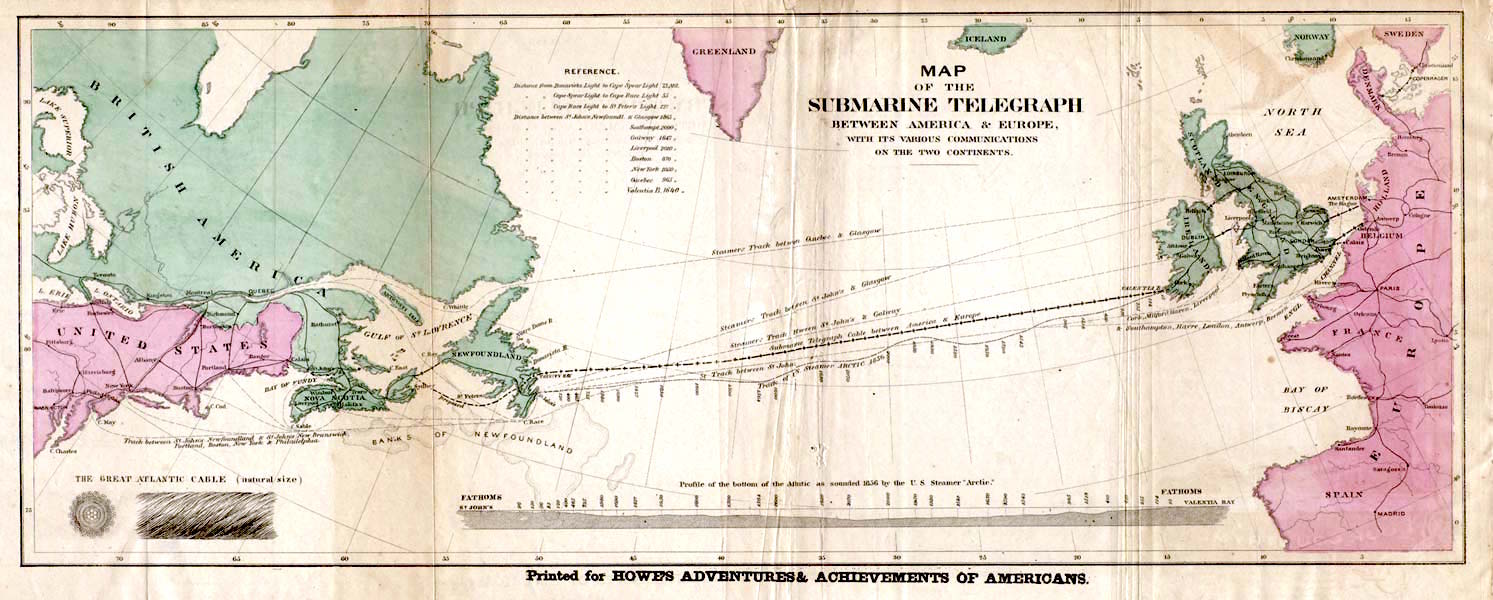|
George Charles Wallich
George Charles Wallich (16 November 1815 – 31 March 1899) was a British medical doctor, marine biologist and professional photographer. He was born in Calcutta where his father, the Danish naturalist Nathaniel Wallich, was Superintendent of the Royal Botanical Gardens. As a Surgeon-Major in the Indian Medical Service, he served 'during the Sutlej and Punjab campaigns, and also during the Santhal rebellion of 1855-56. He retired from the service in 1858.' In 1860 he accompanied Sir Leopold M'Clintock aboard the ''Bulldog'' on a voyage across the North Atlantic to survey the sea-bottom for the laying of the proposed trans-Atlantic cable. He won the Linnean Medal in 1898 'in recognition of the valuable work accomplished by him in connection with the exploration of the fauna of the deep sea' (''St James's Gazette'', 16 April 1898). See also * European and American voyages of scientific exploration The era of European and American voyages of scientific exploration followed the ... [...More Info...] [...Related Items...] OR: [Wikipedia] [Google] [Baidu] |
Calcutta
Kolkata (, or , ; also known as Calcutta , List of renamed places in India#West Bengal, the official name until 2001) is the Capital city, capital of the Indian States and union territories of India, state of West Bengal, on the eastern bank of the Hooghly River west of the border with Bangladesh. It is the primary business, commercial, and financial hub of East India, Eastern India and the main port of communication for North-East India. According to the 2011 Indian census, Kolkata is the List of cities in India by population, seventh-most populous city in India, with a population of 45 lakh (4.5 million) residents within the city limits, and a population of over 1.41 crore (14.1 million) residents in the Kolkata metropolitan area, Kolkata Metropolitan Area. It is the List of metropolitan areas in India, third-most populous metropolitan area in India. In 2021, the Kolkata metropolitan area crossed 1.5 crore (15 million) registered voters. The ... [...More Info...] [...Related Items...] OR: [Wikipedia] [Google] [Baidu] |
Denmark
) , song = ( en, "King Christian stood by the lofty mast") , song_type = National and royal anthem , image_map = EU-Denmark.svg , map_caption = , subdivision_type = Sovereign state , subdivision_name = Danish Realm, Kingdom of Denmark , established_title = History of Denmark#Middle ages, Consolidation , established_date = 8th century , established_title2 = Christianization , established_date2 = 965 , established_title3 = , established_date3 = 5 June 1849 , established_title4 = Faroese home rule , established_date4 = 24 March 1948 , established_title5 = European Economic Community, EEC 1973 enlargement of the European Communities, accession , established_date5 = 1 January 1973 , established_title6 = Greenlandic home rule , established_date6 = 1 May 1979 , official_languages = Danish language, Danish , languages_type = Regional languages , languages_sub = yes , languages = German language, GermanGerman is recognised as a protected minority language in t ... [...More Info...] [...Related Items...] OR: [Wikipedia] [Google] [Baidu] |
Nathaniel Wallich
Nathaniel Wolff Wallich FRS FRSE (28 January 1786 – 28 April 1854) was a surgeon and botanist of Danish origin who worked in India, initially in the Danish settlement near Calcutta and later for the Danish East India Company and the British East India Company. He was involved in the early development of the Calcutta Botanical Garden, describing many new plant species and developing a large herbarium collection which was distributed to collections in Europe. Several of the plants that he collected were named after him. Early life and education Nathaniel Wallich was born in Copenhagen in 1786 as Nathan Wulff Wallich. His father Wulff Lazarus Wallich (1756–1843) was a Sephardic Jewish merchant originally from the Holsatian town Altona near Hamburg, who settled in Copenhagen late in the 18th century. His mother was Hanne née Jacobson (1757–1839). Wallich attended the Royal Academy of Surgeons in Copenhagen, where his professors trained in the botanical science included ... [...More Info...] [...Related Items...] OR: [Wikipedia] [Google] [Baidu] |
Indian Medical Service
The Indian Medical Service (IMS) was a military medical service in British India, which also had some civilian functions. It served during the two World Wars, and remained in existence until the independence of India in 1947. Many of its officers, who were both British and Indian, served in civilian hospitals. Among its notable ranks, the IMS had Sir Ronald Ross, a Nobel Prize winner, Sir Benjamin Franklin, later honorary physician to three British monarchs and Henry Vandyke Carter, best known for his illustrations in the anatomy textbook ''Gray's Anatomy''. History The earliest positions for medical officers in the British East India Company (formed as the Association of Merchant Adventurers in 1599 and receiving the royal charter on the last day of 1600) were as ship surgeons. The first three surgeons to have served were John Banester on the ''Leicester'', Lewis Attmer on the ''Edward'' and Rober on the ''Francis''. The first Company fleet went out in 1600 with James Lancaste ... [...More Info...] [...Related Items...] OR: [Wikipedia] [Google] [Baidu] |
Santhal Rebellion
The Santhal rebellion (also known as the Sonthal rebellion or the Santhal Hool), was a rebellion in present-day Jharkhand and West Bengal , Eastern India against both the British East India Company (BEIC) and zamindari system by the Santhal. It started on June 30, 1855 and on November 10, 1855, martial law was proclaimed by the East India Company which lasted until January 3, 1856 when martial law was suspended and the rebellion was eventually suppressed by the Presidency armies. The rebellion was led by the four sibling Brothers - Sidhu, Kanhu, Chand and Bhairav. Background The rebellion of the Santhals began as a reaction to end the revenue system of the British East India Company (BEIC), usury practices, and the zamindari system in India; in the tribal belt of what was then known as the Bengal Presidency. It was a revolt against the oppression of the colonial rule propagated through a distorted revenue system, enforced by the local zamindars, the police and the courts of ... [...More Info...] [...Related Items...] OR: [Wikipedia] [Google] [Baidu] |
Leopold M'Clintock
Sir Francis Leopold McClintock (8 July 1819 – 17 November 1907) was an Irish explorer in the British Royal Navy, known for his discoveries in the Canadian Arctic Archipelago. He confirmed explorer John Rae's controversial report gathered from Inuit sources on the fate of Franklin's lost expedition, the ill-fated Royal Navy undertaking commanded by Sir John Franklin in 1845 attempting to be the first to traverse the Northwest Passage. McClintock's report was received more favorably than that of Rae, who was shunned and denied recognition for having discovered the lost expedition's fate. Rae's report ultimately guided McClintock to the correct area to conduct a search. McClintock also stirred controversy with his claim that Franklin, before his death, had essentially discovered the Northwest Passage, while in reality he had not. Rae, with his discovery of Rae Strait, had discovered the real ice-free passage through North America's Arctic archipelago. Early life McClint ... [...More Info...] [...Related Items...] OR: [Wikipedia] [Google] [Baidu] |
Trans-Atlantic Cable
Transatlantic telegraph cables were Submarine communications cable, undersea cables running under the Atlantic Ocean for telegraph communications. Telegraphy is now an obsolete form of communication, and the cables have long since been decommissioned, but telephone and data are still carried on other transatlantic communications cable, transatlantic telecommunications cables. The first cable was laid in the 1850s from Valentia Island off the west coast of Ireland to Sunnyside, Newfoundland and Labrador, Bay of Bulls, Trinity Bay, Newfoundland and Labrador, Trinity Bay, Newfoundland. The first communications occurred on 16 August 1858, but the line speed was poor, and efforts to improve it caused the cable to fail after three weeks. The Atlantic Telegraph Company led by Cyrus West Field constructed the first transatlantic telegraph cable. The project began in 1854 and was completed in 1858. The cable functioned for only three weeks, but was the first such project to yield pra ... [...More Info...] [...Related Items...] OR: [Wikipedia] [Google] [Baidu] |
Linnean Medal
The Linnean Medal of the Linnean Society of London was established in 1888, and is awarded annually to alternately a botanist or a zoologist or (as has been common since 1958) to one of each in the same year. The medal was of gold until 1976, and is for the preceding years often referred to as "the Gold Medal of the Linnean Society", not to be confused with the official Linnean Gold Medal which is seldom awarded. The engraver of the medal was Charles Anderson Ferrier of Dundee, a Fellow of the Linnean Society from 1882. On the obverse of the medal is the head of Linnaeus in profile and the words Carl Linnaeus, "Carolus Linnaeus", on the reverse are the arms of the society and the legend ''"Societas Linnaeana optime merenti"''; an oval space is reserved for the recipient's name.Gage A.T. and Stearn W.T. (1988) ''A Bicentenary History of the Linnean Society of London'', Linnean Society of London, p. 80 Linnean medallists 19th century *1888: Joseph Dalton Hooker, Sir Joseph D. Hoo ... [...More Info...] [...Related Items...] OR: [Wikipedia] [Google] [Baidu] |
European And American Voyages Of Scientific Exploration
The era of European and American voyages of scientific exploration followed the Age of Discovery and were inspired by a new confidence in science and reason that arose in the Age of Enlightenment. Maritime expeditions in the Age of Discovery were a means of expanding colonial empires, establishing new trade routes and extending diplomatic and trade relations to new territories, but with the Enlightenment scientific curiosity became a new motive for exploration to add to the commercial and political ambitions of the past. See also List of Arctic expeditions and List of Antarctic expeditions. Maritime exploration in the Age of Discovery From the early 15th century to the early 17th century the Age of Discovery had, through Spanish and Portuguese seafarers, opened up southern Africa, the Americas (New World), Asia and Oceania to European eyes: Bartholomew Dias had sailed around the Cape of southern Africa in search of a trade route to India; Christopher Columbus, on four journeys ... [...More Info...] [...Related Items...] OR: [Wikipedia] [Google] [Baidu] |
19th-century British Biologists
The 19th (nineteenth) century began on 1 January 1801 ( MDCCCI), and ended on 31 December 1900 ( MCM). The 19th century was the ninth century of the 2nd millennium. The 19th century was characterized by vast social upheaval. Slavery was abolished in much of Europe and the Americas. The First Industrial Revolution, though it began in the late 18th century, expanding beyond its British homeland for the first time during this century, particularly remaking the economies and societies of the Low Countries, the Rhineland, Northern Italy, and the Northeastern United States. A few decades later, the Second Industrial Revolution led to ever more massive urbanization and much higher levels of productivity, profit, and prosperity, a pattern that continued into the 20th century. The Islamic gunpowder empires fell into decline and European imperialism brought much of South Asia, Southeast Asia, and almost all of Africa under colonial rule. It was also marked by the collapse of the la ... [...More Info...] [...Related Items...] OR: [Wikipedia] [Google] [Baidu] |
19th-century British Medical Doctors
The 19th (nineteenth) century began on 1 January 1801 ( MDCCCI), and ended on 31 December 1900 ( MCM). The 19th century was the ninth century of the 2nd millennium. The 19th century was characterized by vast social upheaval. Slavery was abolished in much of Europe and the Americas. The First Industrial Revolution, though it began in the late 18th century, expanding beyond its British homeland for the first time during this century, particularly remaking the economies and societies of the Low Countries, the Rhineland, Northern Italy, and the Northeastern United States. A few decades later, the Second Industrial Revolution led to ever more massive urbanization and much higher levels of productivity, profit, and prosperity, a pattern that continued into the 20th century. The Islamic gunpowder empires fell into decline and European imperialism brought much of South Asia, Southeast Asia, and almost all of Africa under colonial rule. It was also marked by the collapse of the large ... [...More Info...] [...Related Items...] OR: [Wikipedia] [Google] [Baidu] |
1815 Births
Events January * January 2 – Lord Byron marries Anna Isabella Milbanke in Seaham, county of Durham, England. * January 3 – Austria, Britain, and Bourbon-restored France form a secret defensive alliance treaty against Prussia and Russia. * January 8 – Battle of New Orleans: American forces led by Andrew Jackson defeat British forces led by Sir Edward Pakenham. American forces suffer around 60 casualties and the British lose about 2,000 (the battle lasts for about 30 minutes). * January 13 – War of 1812: British troops capture Fort Peter in St. Marys, Georgia, the only battle of the war to take place in the state. * January 15 – War of 1812: Capture of USS ''President'' – American frigate , commanded by Commodore Stephen Decatur, is captured by a squadron of four British frigates. February * February – The Hartford Convention arrives in Washington, D.C. * February 3 – The first commercial cheese factory is founded in S ... [...More Info...] [...Related Items...] OR: [Wikipedia] [Google] [Baidu] |









